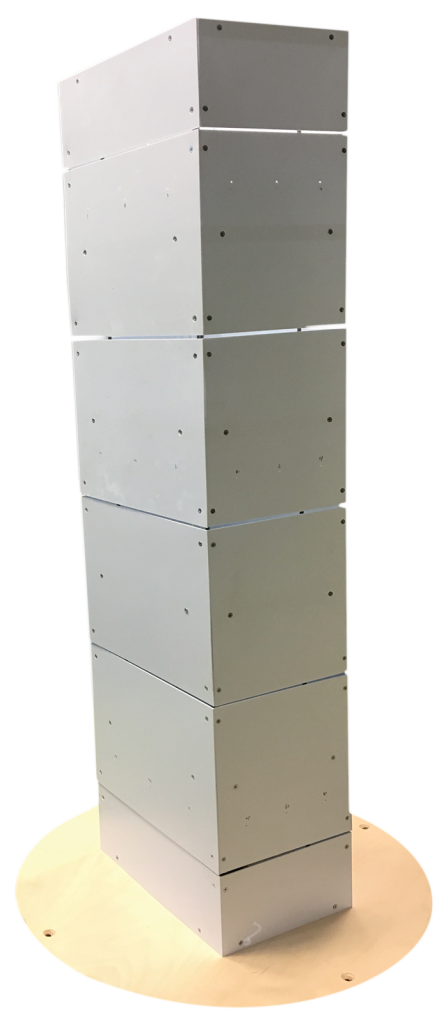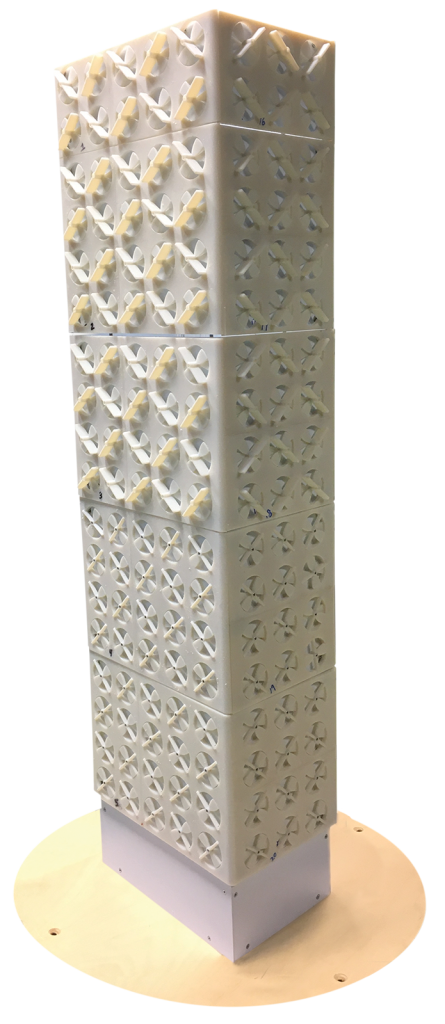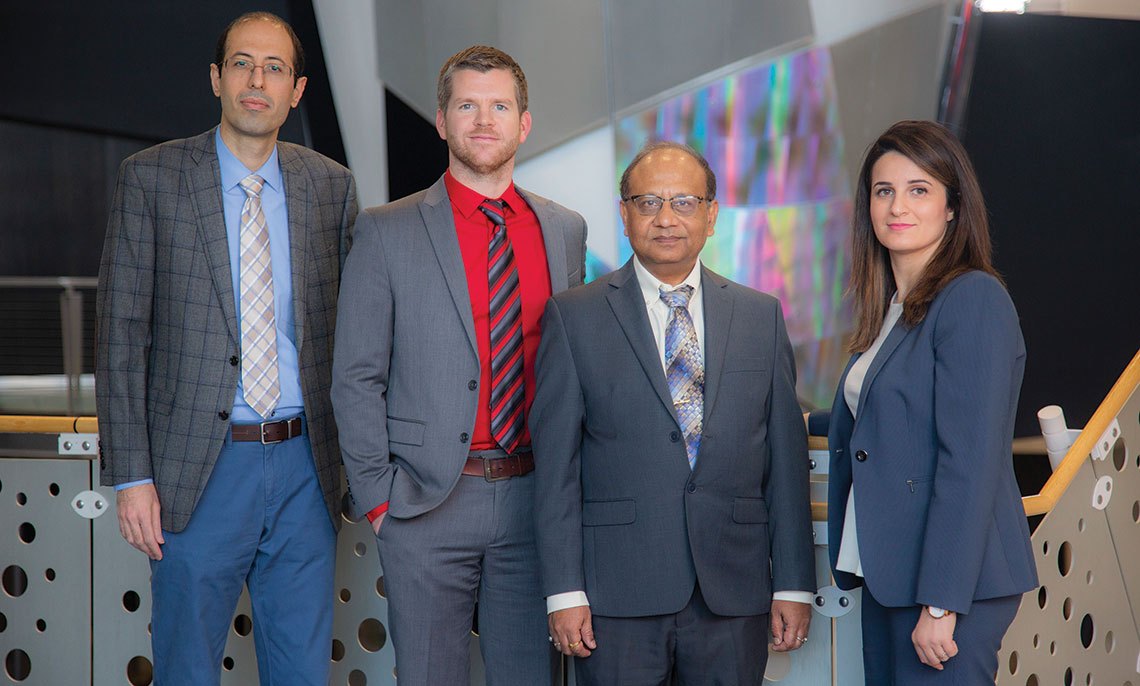
“The Smorphacade project is the first-of-its-kind collaboration between structural engineers, wind engineers and control engineers to turn a passive building façade into a live façade that protects the building against wind load and turbulence,” said Alice Alipour, associate professor of civil, construction and environmental engineering.
Alipour leads a team that’s combining a network of pressure, velocity and acceleration sensors strategically positioned on building surfaces. When excessive vibration-causing flow conditions are detected, the Smorphacade will change surface roughness or smoothness to mitigate inter-story building movements.
Parametric design tool
Alipour has paired extensive experimental tests in Iowa State’s wind tunnel with computational fluid dynamics (CFD) simulations to produce the first design tool that accounts for nonlinear structural response to high winds.
“We have conducted a holistic set of complementary experimental tests and CFD simulations on hundreds of different shapes and orientations of building façades to create a large design space that will be used in conjunction with statistical learning methods to optimize the building envelope,” said Alipour.
Real wind testing
Using data from their robust aerodynamic analysis and modeling, Alipour’s team designed and created a Smorphacade and tested it in Iowa State’s wind tunnel. The team has also successfully developed the control mechanism to morph the facades in real-time to allow for the development of the “alive façade” concept.
“We are very excited about the prospects of this project. Our computational models validated with extensive experimental tests have highlighted that the use of morphing envelopes to change the aerodynamics of the buildings provides a very effective way of reducing the wind-induced vibrations. Along the way, we have made major contributions to state-of-the-art building design under wind events,” said Alipour.
Tomorrow’s multi-use façades
Current adaptive building façades respond to the external climate conditions to meet occupants’ comfort needs and save energy. Alipour sees a beneficial partnership between energy-saving building façades and her team’s Smorphacade.
“Using adaptive façades for multiple purposes is a win-win. Façades that are used for not only infrequent wind effects but also for year-round energy savings mean lighter and more economical building solutions,” said Alipour.
Building strong collaboration
“We started from the established strength in structural and wind engineering here at Iowa State and from that base we built an interdisciplinary team of complementary expertise,” said Alipour.
Cyclone Engineers Partha Sarkar, professor of aerospace engineering, lends extensive wind-testing expertise, and Behrouz Shafei, associate professor of civil, construction and environmental engineering, specializes in innovative structural systems with a potential for both sustainability and resilience. Additional collaborator, Jared Hobeck, assistant professor of mechanical engineering at Kansas State University, offers expertise in developing advanced control systems capable of active or passive vibration suppression.

